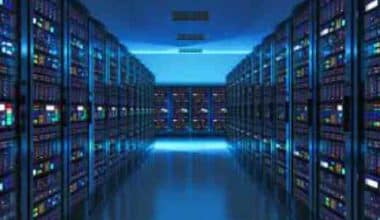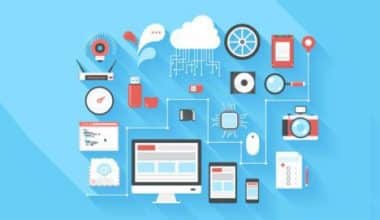Most companies in this digital era have a greater number of assets to monitor and manage. However, managing and tracking all these IT assets is becoming increasingly difficult. This is a result of the proliferation of mobile devices in the workforce, complex cloud-based technologies, the rise of licensed software applications, and frequent upgrades. Increased employee mobility also poses a threat to sensitive data. Software asset management tools are designed to assist businesses in better tracking and managing physical and digital assets to get the most out of them at the lowest possible cost in terms of hardware( IT) and software. This piece provides companies with the best and most free software asset management while shedding more light on the magic quadrant of these tools.
What is Software Asset Management?
Software asset management (SAM) is a strategic function that entails managing and optimizing the procurement, placement, consumption, maintenance, as well as decommissioning of software applications inside a company.
It is a subset of IT Asset Management, which deals with the administration of computer systems and peripherals.
However, using software asset management principles can provide a number of benefits, including the following:
- Having a thorough understanding of the software spending as well as complete control over it
- Keeping in sync with license requirements and being audit-ready
- Management of licenses and contracts, beginning with planning, continuing through acquisition and renewal, and ending with cancellation
- Improved responsiveness to software requests from internal departments and during employee onboarding
- Gaining awareness of the changes in software needs and how they will evolve in the future
- Optimization of software licenses is achieved by making use of already existing software assets and assigning available licenses to locations where they are needed.
- Access to insightful information about software usage that may facilitate improvement of software asset management at any stage of the software development lifecycle.
What is a Software Asset Management Tool?
Software asset management tools are defined as products that aid in optimizing software and SaaS spending by facilitating the automation of operations necessary to maintain compliance with software licenses. To keep track of and maintain compliance with all of a company’s software licenses, it employs software asset management (SAM) tools
SAM products were originally developed to manage on-premises software licenses, but several expanded their functionality to include monitoring SaaS assets as well. Corporate assets and remote management utilize SAM software for a wide range of purposes, including cost tracking, contract management, compliance, and licensing management.
Best Software Asset Management Tools
Software asset management tools can be used to track and manage an asset’s whole lifecycle, from acquisition to use to replacement to retirement. While a company could use something as simple as a spreadsheet to keep track of its assets, employing a SAM would allow it to evaluate data that is unique to each asset, allowing it to make better decisions about how to manage those assets.
After evaluating several reviews. the following categories make this list based on a variety of criteria, including cost, customizability, special features, ease of implementation, remote access, and user experience.
#1. InvGate Assets
With its comprehensive feature set, simple installation process, and user-friendly interface, InvGate Assets is the best SAM for small and medium-sized businesses in need of an asset management solution.
It helps businesses keep track of their assets, and have some of the pre-installed features. This includes; advanced reporting, network discovery, remote desktop access, change management, license management, software distribution, and software metering. InvGate’s intuitive interface reduces training time and facilitates rapid adoption. Users can obtain reports by doing a standard search and then exporting the results to Excel.
The alert system in InvGate may be quickly and easily set up to notify users of any issues with their assets. The process of adding assets to the system is also straightforward, requiring only the installation of a small agent on each piece of hardware that needs to be monitored. Any client running Windows, Mac OS X, or Linux can use this system.
Pros
- Setup that is both simple and rapid
- Navigation that is uncomplicated and simple to understand
- Alarms can rapidly indicate when there are issues with assets.
- Priced affordably for micro, small, and medium-sized businesses
Cons
- Reporting restrictions
#2. Invanti IT Assets Management Suite
Ivanti provides almost everything that ensures an organization can keep track of and manage its IT assets efficiently and accurately over its entire lifecycle. This include; asset identification, financial management, software compliance, license management, and more.
Likewise, installing is a breeze for Windows users because of the setup program’s Windows-based interface. The first scan of your network’s assets is just a few clicks away thanks to the wizard’s easy path, which also includes learning opportunities for configuration and administration. After the initial sweep, you are free to install the machines.
Ivanti is not a cloud-based service, so accessing it requires extra work during installation and more gear. However, you can use Invanti on both mobile and desktop workspaces. Also, businesses that are able to handle an on-site installation benefit from instantaneous asset discovery and report generation.
In addition, Invanti has a free trial option of Ivanti’s Asset Management Suite. If you sign up for Ivanti, you’ll get access to their technical support resources like their help desk and self-service site.
Pros
- Workspaces both mobile and stationary
- User interface resembling that of Windows
- Easy wizard setup
- Workflows and processes are able to be modified as needed.
- Multiple choices for technical help
Cons
- Does not provide any services that run in the cloud.
- Installation method that is both time-consuming and resource-intensive
- Premium plans are the only ones that include round-the-clock phone help.
#3. ManageEngine AssetExplorer
ManageEngine AssetExplorer is a web-based application filled with tools and capabilities. It can monitor inventory management, software license administration, compliance assessment, and more. Due to the many available options and menus, the setup may seem complicated at first. On the other hand, ManageEngine AssetExplorer has a great Quick Links tool that will keep you from becoming sidetracked from your work.
The reporting functionality of ManageEngineAssetExplorer demonstrates the system’s advanced technology. The system also includes a few dozen pre-built reports and the option to export reports in a variety of formats, which can incorporate all previous inquiries. Moreover, it’s simple to make reports that fit your exact needs.
Another distinct feature of ManageEngine AssetExplorer is the availability of round-the-clock technical help for all users. It’s also unusual in that it works with virtual machines and hosts.
Pros
- A toolkit that is loaded with features and has advanced technology
- Simple to set up
- Costs that are not excessive
- User interface reminiscent of Microsoft Windows
Cons
- No mobile application
- This option is not suitable for small firms with a limited IT team.
#4. Asset Panda
Businesses of any kind and size can benefit from Asset Panda, as it is a cloud-based asset management solution. besides providing premium features (unlimited users and bespoke reporting), Asset Panda may easily be modified to match any business’s niche requirements, all for $1,500 for 500 assets.
When it comes to inventory and asset management, Asset Panda is a one-stop shop for any company. The ability to track assets across various locations and throughout transit is only one of the many benefits of this software’s inventory management feature.
Users have access to some strong reporting capabilities with built-in reports that enable for modification. They also offer a mobile app to scan bar codes and add assets on the go, and it is totally linked with the web application. The app may generate reports and also supports mobile audit and GPS monitoring. That’s an unusual quantity of functionality for a smartphone app.
Pros
- Dashboard with a high degree of reconfigurability Feature-packed mobile app with barcode scanning
- Data files are able to contain media such as photographs, videos, and audio recordings.
- Strong support for technological matters
Cons
- A steeper learning curve for the user
- There is no discovery of networks
#5. ServiceNow
ServiceNow’s software asset management tool provides users and businesses of all kinds the features for tracking and keeping tabs on, assessing, and administering software licenses in a breeze-like format. Users can also recover software licenses, purchase new ones, and manage allocations with the help of ServiceNow SAM.
They offer information about software consumption, which is useful for reducing expenses, maintaining license compliance, and audit readiness. It also automates the allocation of software assets during onboarding.
Pros
- Powerful and very adaptable to individual needs
- Excellent support staff
Cons
- Unintuitive and cumbersome user interface
- The first setup was complicated and took a long time.
#6. ALLOY SOFTWARE
Alloy Software Asset Management facilitates the optimization of software spending made which also assures license compliance and maintains audit readiness. It works well for organizations of all sizes, be they small, medium, or huge. With Alloy, scanning and information collection concerning software inventory can be done automatically and fast.
It helps maintain the information on all of the software in a single, centralized location while also finding unapproved software and reducing the hazards associated with shadow IT. Additionally, it optimizes software licenses and makes certain to keep the system in compliance and audit-ready condition.
Alloy software allows users to maintain control of the software’s subscriptions and renewals.
Pros
- Strong and very modifiable to your specifications.
- Reliable and user-friendly
- Excellent support
Cons
- Complex set up
- The customization process is lengthy and intricate
- There are some functions that are built-in, but they are limited and require the necessity to make adjustments to the default settings for certain functionalities.
#7. GO CODES TOTAL ASSET MANAGEMENT
GoCodes is an online asset and inventory management software tool. Businesses of any size that need to keep track of physical assets might benefit from their programs in great ways. With Gocodes, checking an asset into GoCodes with information like the asset’s kind, subtype, serial number, assignee, and any additional data tracked using customizable, user-defined fields is as simple as sticking a barcode sticker on it. By using a mapping function, administrators may keep tabs on an item’s whereabouts at any given time. GoCodes keeps tabs on requests for maintenance, fixes, and upkeep for each individual asset.
Automated depreciation calculations are performed by GoCodes based on the most typical fixed asset calculation scenarios.
Their enterprise plan includes not fewer than twenty fully customized reports as well as optional reporting features as add-ons in the other plans.
There are five tiers of service available on GoCodes: Standard, Premium, Premium Elite, Professional, and Enterprise. All of these include any number of employees, mobile apps, configurable fields, GPS monitoring, and an inventory management system.
Pros
- Ease of installation and operation
- Costs that are not excessive
- Stickers that be physically secure and include precise information
- Identifies powered-down objects via the internet or mobile devices.
- Monitors assets that are and are not connected to a network
Cons
- There is neither a tracking system for software usage nor an automatic detection system for assets.
- Reporting restricted
#8. AWS Licence Manager
AWS License Manager is capable of managing software licenses from a variety of vendors, including Microsoft, SAP, Oracle, and IBM. For the purpose of preventing violations of licensing agreements when in use, it grants administrators the ability to define individualized licensing rules.
Rules in the AWS License Manager can assist prevent a licensing violation from occurring. This is by preventing an instance from launching or by notifying administrators about the infraction. AWS License Manager can also be utilized by independent software suppliers (ISVs) to facilitate the distribution of licenses and to keep track of them.
AWS solution provides management and insight over all licenses. It also reduces the likelihood of non-compliance, incorrect reporting, and additional expenditures resulting from license excesses.
Pros
- Quick and dependable.
- Administrate licenses on-premises as well as in the cloud.
Cons
- The initial setup requires a lot of effort and time.
- The learning curve is quite steep
#9. MMSoft Pulseway
When it comes to mobile asset monitoring and management, MMSoft Pulseway is hard to beat. Pulseway is mobile-first, unlike other remote monitoring and administration software, so you can handle any administrative operation from your phone or tablet.
In keeping with the expectations of a mobile-first system, Pulseway offers a state-of-the-art and intuitive interface across all devices and operating systems. Connectivity to equipment is almost instantaneous, and users have access to the full suite of system operations through a clean and intuitive interface.
The Pulseway mobile app allows you to troubleshoot cloud-based servers and other operating systems, in addition to Windows workstations that you may access remotely. It also has a real-time updates feature where you can make updates to the app’s status.
Pulseway provides a no-cost SAM version that can be used to keep tabs on two machines. While a fully functional 14-day trial is also available.
#10. Flexera
It is designed for large enterprises and can manage software on a variety of platforms, including desktops, data centers, and the cloud. It aids in the management of vendor relationships, licensing optimization, and contract management, all of which contribute to improved business outcomes.
Automatically, it offers information regarding the risks and costs associated with every software that has been installed in settings that are physical, virtual, containers, IaaS, or PaaS.
In order to gather software evidence, it also interfaces with already inventory systems provided by companies such as Microsoft, ServiceNow, IBM, and BMC.
Pros
- Extremely adaptable and highly configurable to each individual’s needs.
- Compliance with software licenses is maintained, and risks during audits are reduced.
- Displays information that is incredibly precise
Cons
- Poor service to the customer
- Because the learning curve is so high, it takes some effort and time to comprehend and get familiar with all of the features.
- Initially setting it up and installing it takes some time.
Read Also: ASSET MANAGEMENT SYSTEM: Benefits & Top 5 Software Solutions
Free Software Asset Management Tools
You can see exactly how your business is spending its money thanks to the IT tools and software asset management procedure. It is possible to more precisely budget for software resources by keeping track of the annual software purchase count. As with software assets, keeping tabs on hardware usage is useful for figuring out whether to add more or liquidate unused assets.
Managing assets manually, using tools like Excel spreadsheets, may be tedious and error-prone. Software asset management tools facilitate the centralization of asset data, enabling you to keep track of all asset-related information in a single location.
To determine which software asset management tools are a good fit for your company, you should first try out the available free versions. Below are the top free software asset management tools you can compare;
- Sematext Cloud
- Reftab
- Ralph
- ResourceSpace
- Asset Tiger
- NMIS
- OpenMAINT
- Data Resource Manager (DRM)
- Spiceworks
- SysAid
Why Do We Need Software Asset Management Tools?
Software asset management tools, whether free or paid aids businesses in optimizing software expenditures, and avoiding the procurement of superfluous software. It also helps in avoiding penalties and fines related to non-compliance by providing precise information about assets throughout their existence.
What are Examples of Software Assets?
The following are examples of software assets;
- ResourceSpace
- Asset Tiger
- NMIS
- InvGate Assets
- Asset Panda
What are 3 Methods that are Used to Manage Asset Management?
- Asset Tracking
- Work Order Handing
- Cloud-Based Software
IT Software Asset Management Tools
IT software asset management tools are comprehensive computer systems that keep tabs on all of an organization’s resources. In an IT ecosystem, the process aids in the making of strategic decisions.
The IT software asset management tools connect a company’s physical possessions to its digital resources. With the help of dependable software asset management tools, management and IT staff can keep tabs on every asset in the business. These procedures can be put to use in planning the acquisition and maintenance of an organization’s assets.
IT software asset management tools can be thought of as a hybrid of traditional IT support and financial bookkeeping. You can get a reliable financial statement by using the data stored in the IT software asset management tools. With this information, executives will be better able to make sound business judgments. Additionally, investors will have a clearer picture of the company’s financial health.
Why is the Purpose of an IT Software Asset Management Tools?
A system for managing IT assets should be able to do the following things:
- Contribute to the effective management of the assets.
- Increase the transparency of the assets.
- Ensure that assets are used to their fullest potential.
- Spend less on software and information technology.
- Ensure conformity with the requirements of the regulatory agency.
What are the types of IT asset management?
The various types of IT asset software management tools include;
- NinjaOne
- SuperOps.ai
- Artera
- Auvik
- AssetExplorer
What Does an IT Software Asset Management Tools Do?
There are many roles that you can perform with IT software asset management tools. Users can use an IT asset management program to track anything of value, anything that falls under an organization’s assets. Also, physical and digital possessions can both be cataloged and accounted for with the help of asset management software.
What is IT Asset Lifecycle Management?
Asset Lifecycle Management, also known as ALM, refers to the practice of enhancing the operational performance and reliability of an asset over the course of its lifecycle.
The management of an IT asset Lifecycle goes through these six basic stages;
- Design Engineering
- Purchase
- Installation
- Utilization
- Maintenance
- Disposal
Software Asset Management Companies
It’s common knowledge that keeping track of software is difficult. There are many parties involved in the lifecycle of software, from acquisition to deployment to maintenance to use to eventual disposal. These technologies are intricate and ever-evolving. Software asset management companies assist businesses to get the precise data they need to optimally license their IT infrastructure by acting as a neutral third party and providing a completely objective perspective on monitoring and regulating software assets.
Below are some of the known software asset management companies;
- Microsoft Volume Licensing
- ServiceNow Software Asset Management
- USU Software Asset Management
- Symphony SummitAI – IT Service Management
- Micro Focus ZENworks Asset Management
- Zluri
Conclusion
With the help of Software Asset Management tools, you can keep tabs on your software installations and ensure that you’re in accordance with your software licenses. Without a SAM tool of some type, it is impossible to have an accurate portrayal of your software environment if your infrastructure is large enough to include thousands of devices.
Likewise, in the event of a software audit, SAM tools are your strongest line of defense if used properly.
If you want your Software Asset Management program to succeed and you don’t want to waste money on tools that won’t do their job, you need to choose the correct SAM tool (paid or free). Having untracked data surface during a software audit is far worse than spending money on licenses and consultants to deploy the solution.
Software Asset Management Tools FAQs
What is the best free asset management software?
The following are the 5 free software asset management tools in 2022:
- Snipe-IT.
- Samsara.
- Spiceworks.
- Asset Panda.
- AssetTiger.
What is the responsibility of an IT asset manager?
The IT Asset Manager is in charge of the day-to-day operations as well as the long-term strategic management of the organization’s software and hardware that is associated with technological matters.
How much does it cost to purchase an asset management system?
Depending on the sort of software you use and the functionality that your company requires, the cost of asset management software can range anywhere from $20 to $200 per user, each month.
Related Articles
- DO I NEED A BUSINESS LICENSE? : The Need to Get a Business License
- WORKFORCE MANAGEMENT TOOLS: Best Workforce Management Tools
- PROJECT MANAGEMENT TOOLS GOOGLE: All You Need to Know
- Reviews of Top 11 Business Management Software In 2023
- REMOTE MONITORING: What It Is, Application and Jobs






